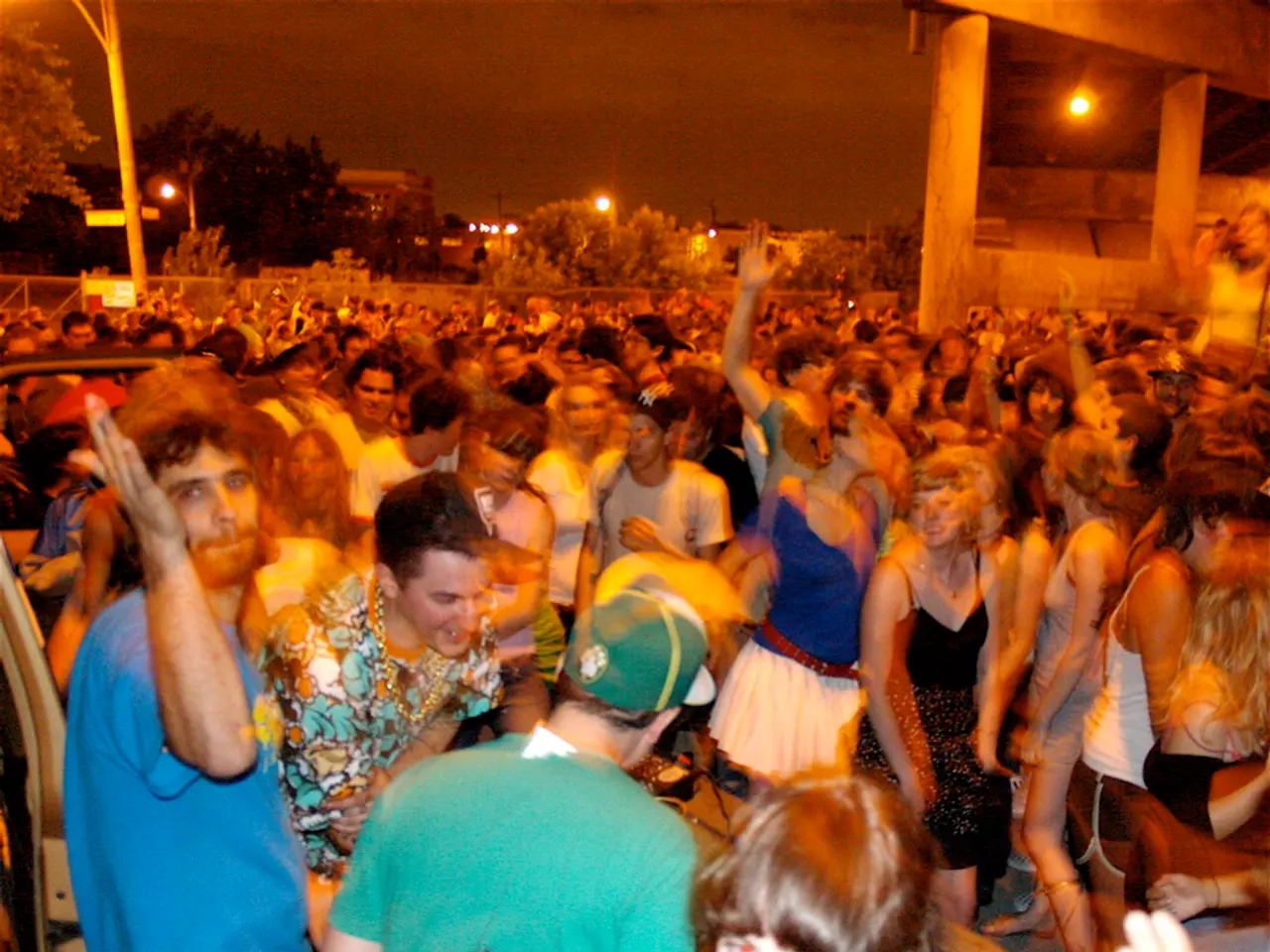Revitalization and refinement of the variety show format in Berlin's theaters
In the heart of Berlin, the city's theatre scene is buzzing with a unique blend of tradition and innovation, a testament to the enduring appeal of variety theatre. This eclectic form of entertainment, which gained popularity around the turn of the 19th century, can be seen in various productions across the city.
Katharina Stoll and Isabelle Redfern's Sistas! at Volksbühne is a prime example. Inspired by Anton Chekhov's Three Sisters, the production incorporates elements of variety theatre, creating a captivating amalgamation of living-room conversations that break into square dancing, opera singing interludes, and even a moment of escalating sword swallowing.
The production goes beyond the original Fiddler on the Roof and delves into the "tradition" of Jewish performance, ranging from 19th-century vaudeville to modern Berlin performers. Scholar Robert M. Lewis noted that vaudeville captured the experience of the modern city's colliding worlds, a sentiment that resonates deeply with this production.
Contemporary Berlin theatre pieces that can be seen as modern interpretations of the variety theatre tradition include shows at the Wintergarten Varieté. This venue combines acrobatics, comedy, live music, and dance in a high-energy variety entertainment format, continuing the classic variety theatre style with innovative mixes of performance. Another example is the cabaret-style programs like the STACHELSCHWEINE anniversary show, which blends black humor, music, and topical satire in the tradition of Berlin’s variety-cabaret scene.
The one-woman performance of Sina Martens in Lena Brasch's It's Britney, Bitch at the Berliner Ensemble also incorporates elements of variety theatre. Each monologue is broken up by a slowed-down version of a Britney Spears song, offering a multitude of textures. The audience is asked to work out independently the relationships between the various events on stage and its namechecked antecedent(s).
Variety theatre has become a technique of estrangement in contemporary Berlin, where the audience is asked to reflect on the logic of the narrative on stage and, perhaps, our lives. It demands that the audience think, as it interrupts the forward movement of traditional narrative and requires figuring out how the spectacle that appears before us sits with what came before.
In December, the production Fiddler! A Musical at HAU pays homage to the Broadway classic Fiddler on the Roof in a postmodern way. Musical performances, comedy acts, famously dramatic monologues, ballet interludes, daredevil acrobatics, boxing matches, short films, arias, and Wild West reenactments were common in vaudeville, and this production seems to draw from this rich history.
Looking around Berlin, there might be something to the idea that vaudeville could be a way to think about the great diversity so many shows hold in themselves. After all, variety theatre, as it was called in the UK, or "vaudeville" in the US, pushed theatre's variousness to extremes around the turn of the 19th century. By 1905, some rated vaudeville as the avant-garde of theatrical innovation.
In the city that never sleeps, variety theatre continues to thrive, offering a unique blend of entertainment that appeals to a wide audience. Whether it's the high-energy spectacle of the Wintergarten Varieté, the thought-provoking narrative of Sistas!, or the pop-culture infused It's Britney, Bitch, Berlin's variety theatre scene is a testament to the enduring appeal of this eclectic form of entertainment.
Read also:
- Impact of Alcohol on the Human Body: Nine Aspects of Health Alteration Due to Alcohol Consumption
- Understanding the Concept of Obesity
- Tough choices on August 13, 2025 for those born under Aquarius? Consider the advantages and disadvantages to gain guidance
- Microbiome's Impact on Emotional States, Judgement, and Mental Health Conditions






